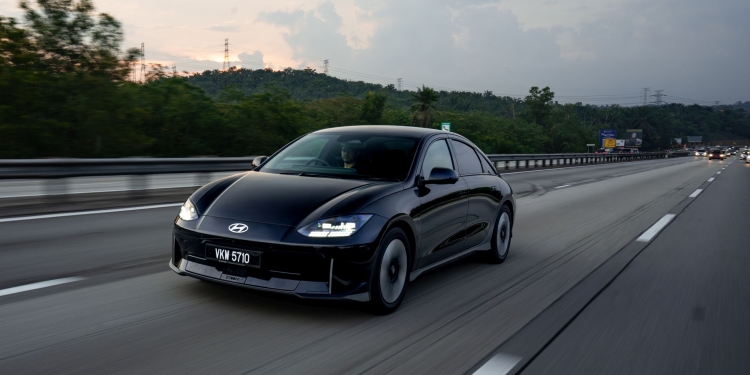Before the Hyundai Ioniq 6 was launched in Malaysia, Hyundai Sime Darby Motors (HSDM) teased that you could drive this EV from Taiping to Johor Bahru on a single charge. The Hyundai Ioniq 6 Max RWD version equipped with a 77.4kWh battery has a rated range of 614km on the WLTP cycle.
In most cases, you might think that manufacturers are just overclaiming their real-world range. To put the Hyundai Ioniq 6’s claims to the test, we recently took this sleek EV for a rather extensive road trip to find out if the Ioniq 6 is a true long-distance cruiser and whether it can truly deliver its over 600km of driving range.
Hyundai Ioniq 6 RWD offers the longest range
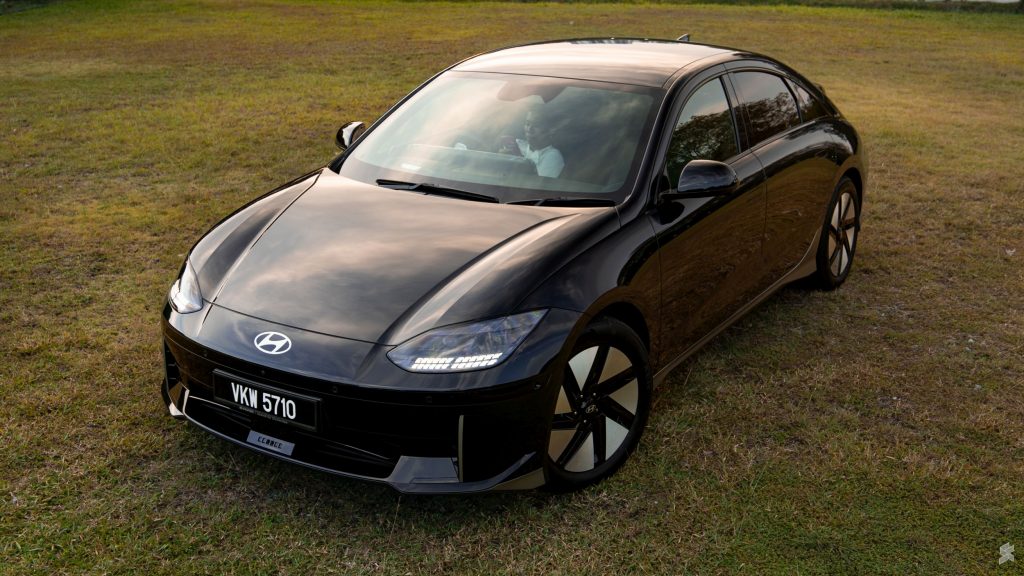
To recap, the Hyundai Ioniq 6 is offered in two versions in Malaysia. If you want the longest range of up to 614km, the RWD model with 18″ wheels is the one to get and it has a retail price of RM289,888. The RWD version gets a single electric motor delivering 168kW (228hp) and 350Nm of torque. It has a 0-100km/h time of 7.4 seconds and a rated top speed of 185km/h.
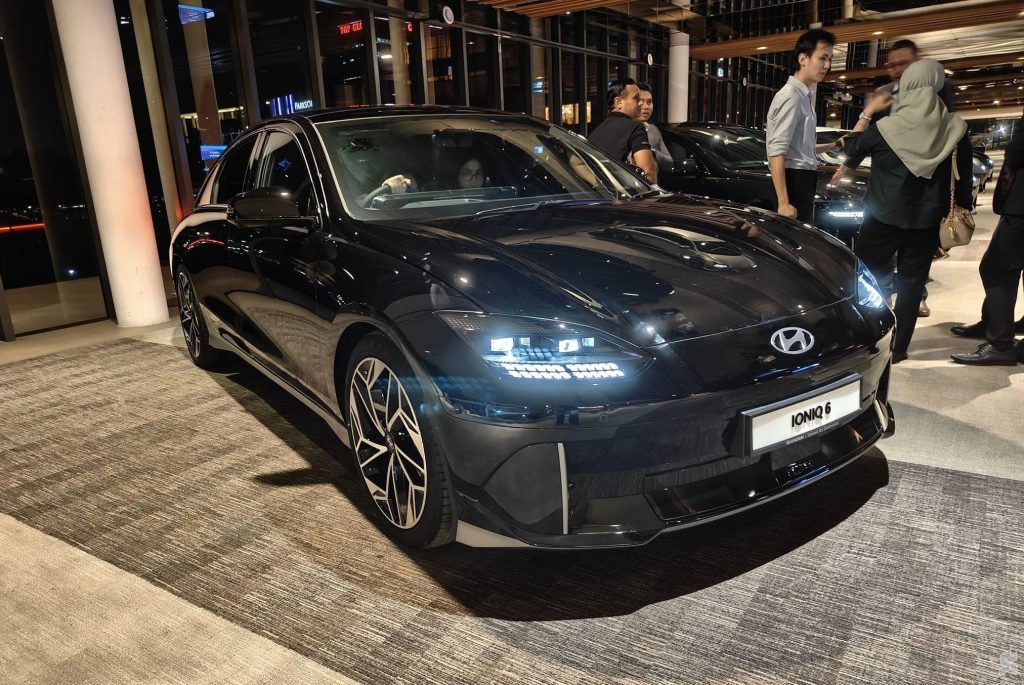
If you want more performance, there’s the AWD version which is priced at RM319,888. For an extra RM30,000, this AWD gets an extra motor for the front and the twin motor setup provides a total of 239kW (305hp) and 605Nm of torque, which is similar to its cousin, the Kia EV6 GT-Line. With the extra power, it has a quicker 0-100km/h time of just 5.1 seconds but it retains the same rated top speed of 185km/h. While it still gets the same 77.4kWh battery pack, the Ioniq 6 Max AWD with 20″ wheels has a WLTP-rated range of 519km, which is almost 100km less than the RWD version.
You can learn more about the rest of the Hyundai Ioniq 6 specs, features and warranty in our announcement post.
Parameters for the Hyundai Ioniq 6 RWD challenge
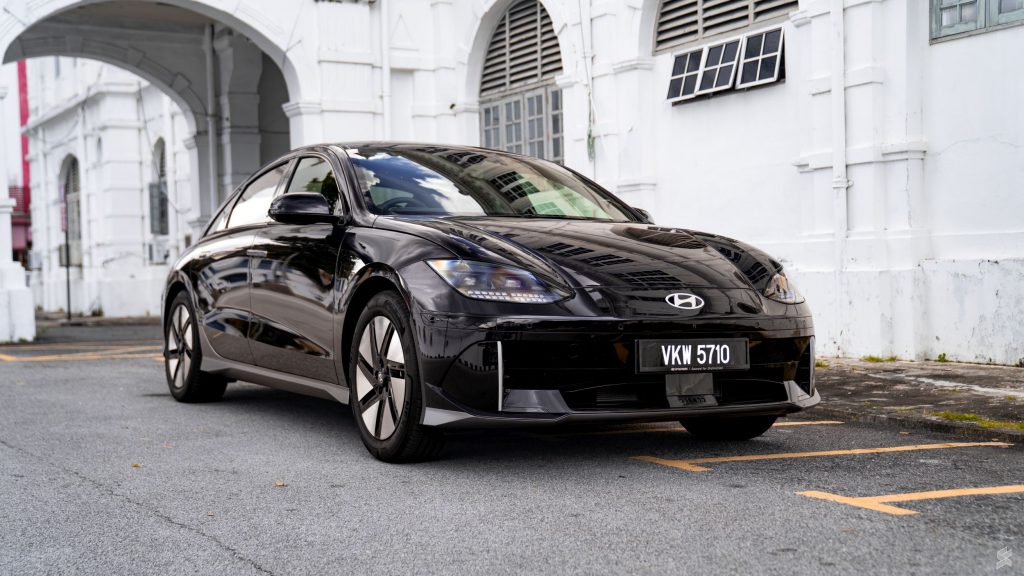
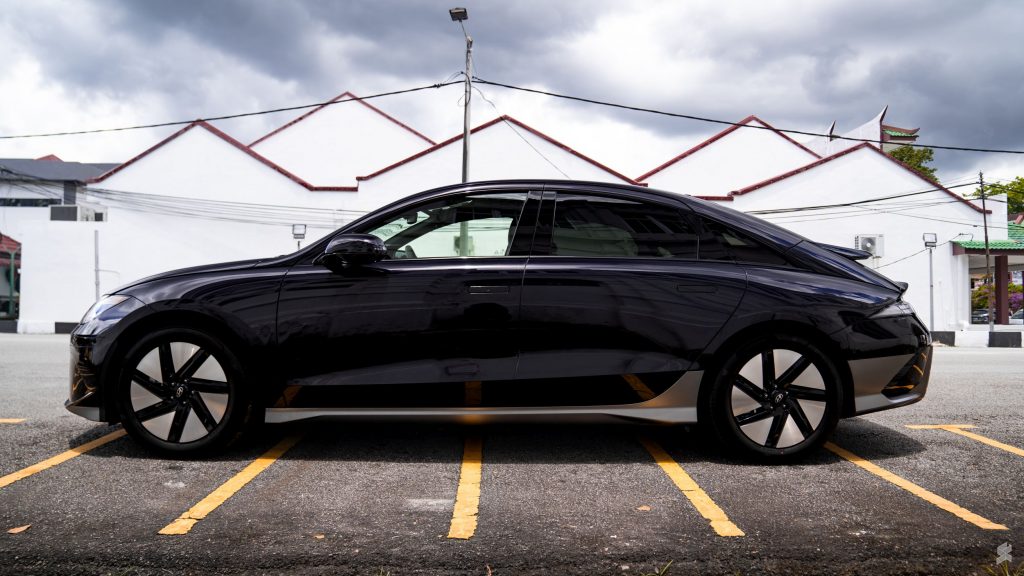
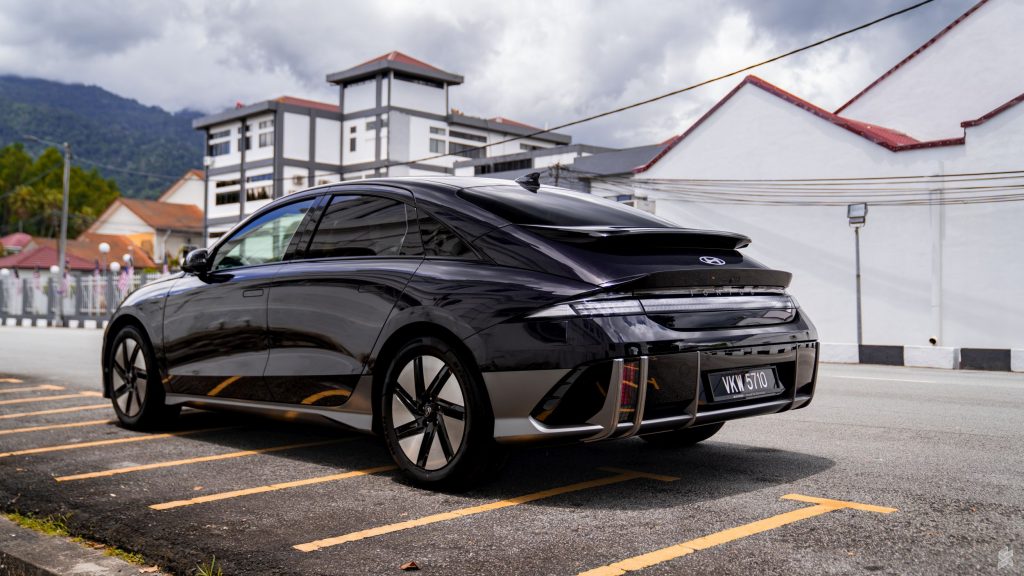
In order to get the claimed 614km mileage from the 77.4kWh battery, we would have to achieve an efficiency of 12.6kWh per 100km. That’s insanely low considering I typically clock an average of 17kWh per 100km for long-distance trips on the Kia EV6 GT-Line. That’s with mostly driving at a maximum speed of 100-110km/h on Eco Mode and Auto for regenerative braking.
Despite having the same battery size, the Ioniq 6 is not only lighter but it gets a more aerodynamic shape. It has a drag coefficient of just 0.21 Cd versus 0.28 Cd on the EV6. In addition, the smaller 18″ Aero wheels on the Ioniq 6 RWD should also improve efficiency as well. As a result, the Ioniq 6 should cut through the air better and that means less energy to move this two-tonne EV at highway speeds.
For this Taiping to JB trip on the Hyundai Ioniq 6, we will apply the same conditions as well which include setting the car to adaptive cruise control with a maximum speed of 110km/h. The driving mode is set to ECO, auto for regenerative braking and the air-conditioning is set to auto at 23 degrees Celsius for the entire trip.
For a more realistic long-distance scenario, we did this trip during the state election weekend on Sunday, 13th August 2023. We left Kuala Lumpur at around 7.30am and got a full charge at Ipoh X Park, before heading to the starting line at Taiping, Perak.
Starting the 600km trip from Taiping
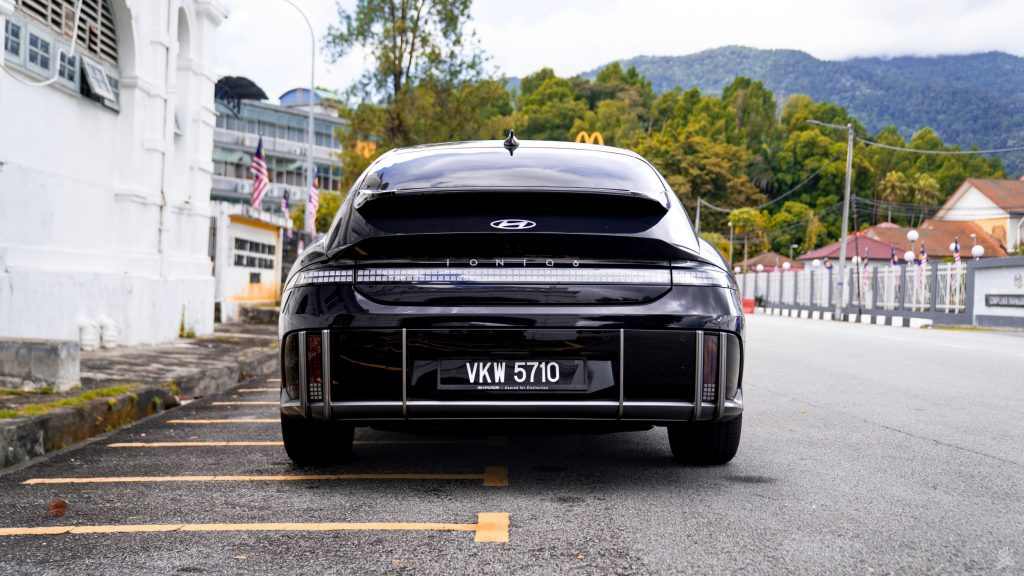
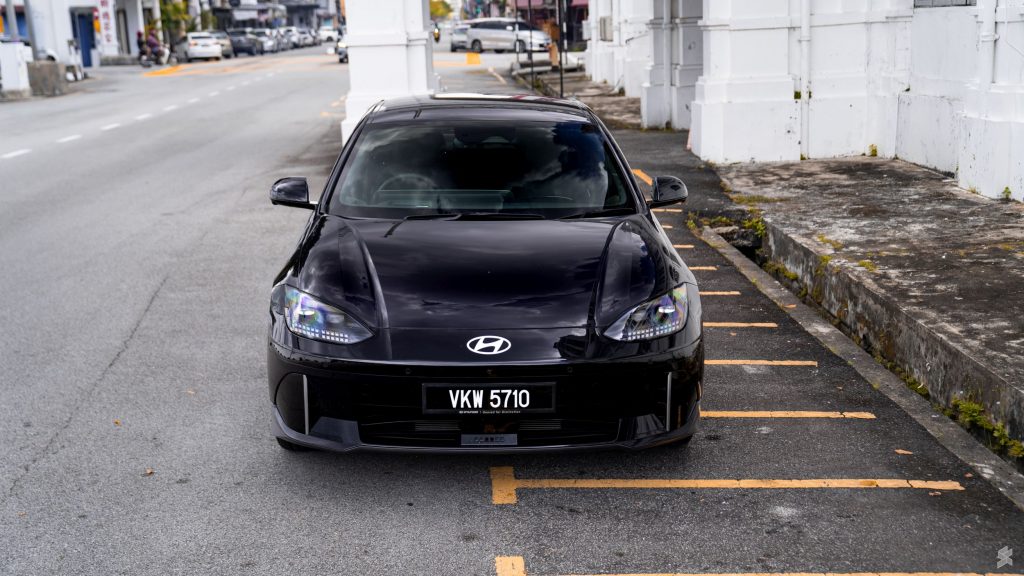
After driving around Taiping for photo and video shoots, and looking for places to eat, we departed Taiping for Johor Bahru at around 3pm at 83%. We head to the nearest DC fast charger for a full charge which is located about 15km away at Caltex Bukit Gantang (Southbound) along the North-South Expressway.
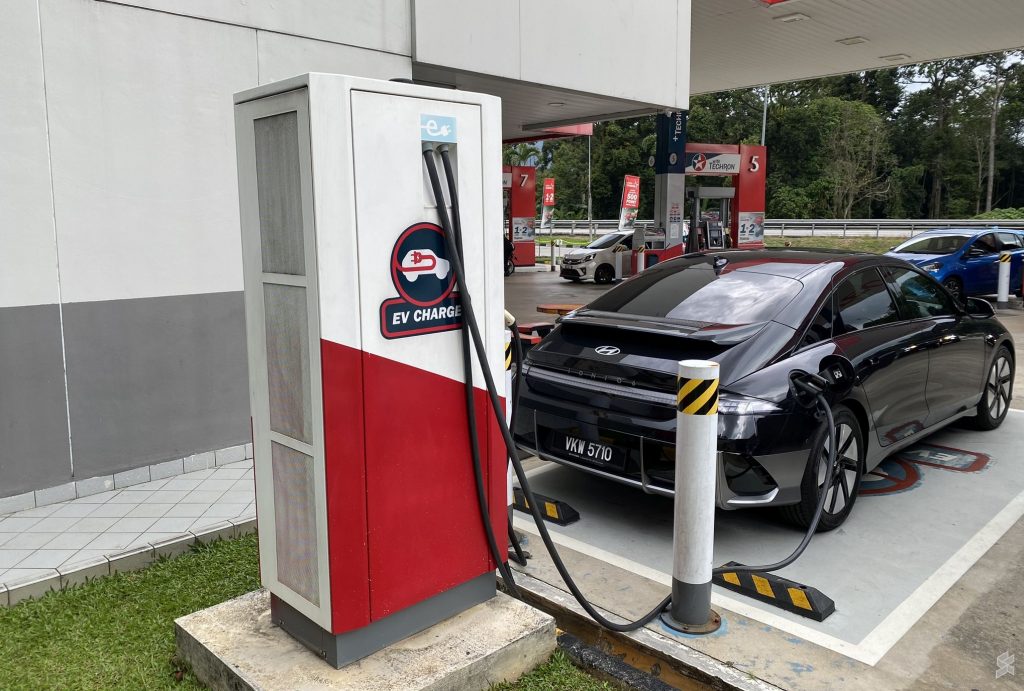
Charging the Ioniq 6 from 81% to 100% took us 26 minutes on a 50kW DC Charger. In most cases, it isn’t recommended to use DC charging beyond 80% as it takes significantly longer to charge from 80% to 100%, but we are doing it for the sake of this challenge. Fortunately, we didn’t need to queue and there were no other EVs around while we were at the station.
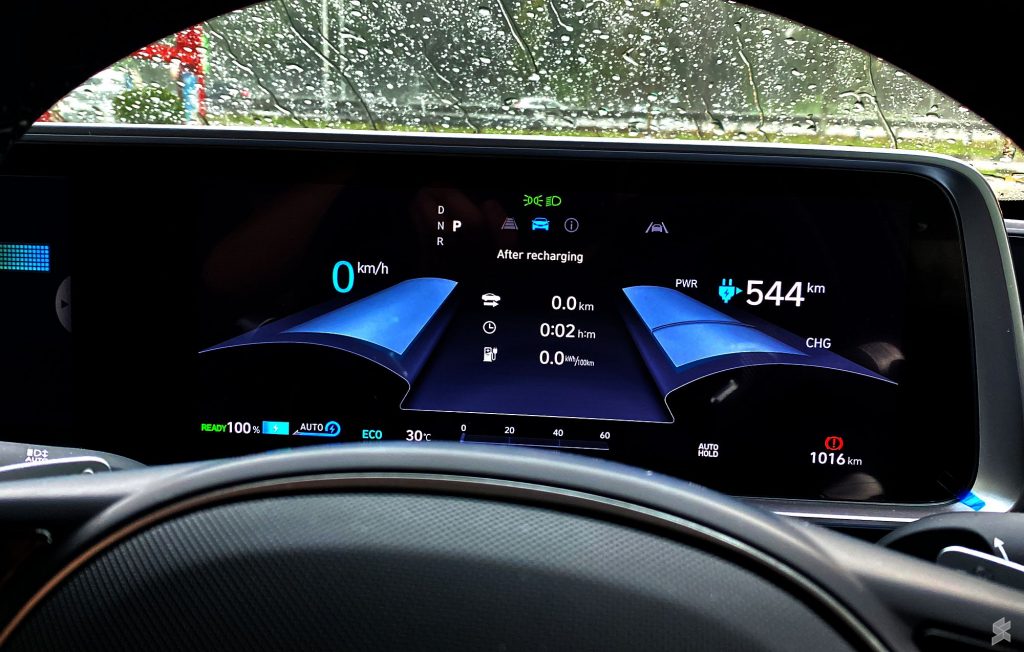
At 100% charge, the Ioniq 6 was only showing a maximum range of just 544km which was quite worrying at first. But based on our calculation, as long as we can achieve an efficiency of 12.6 kWh per 100km or lower, we should have no problem reaching our final stop in JB.
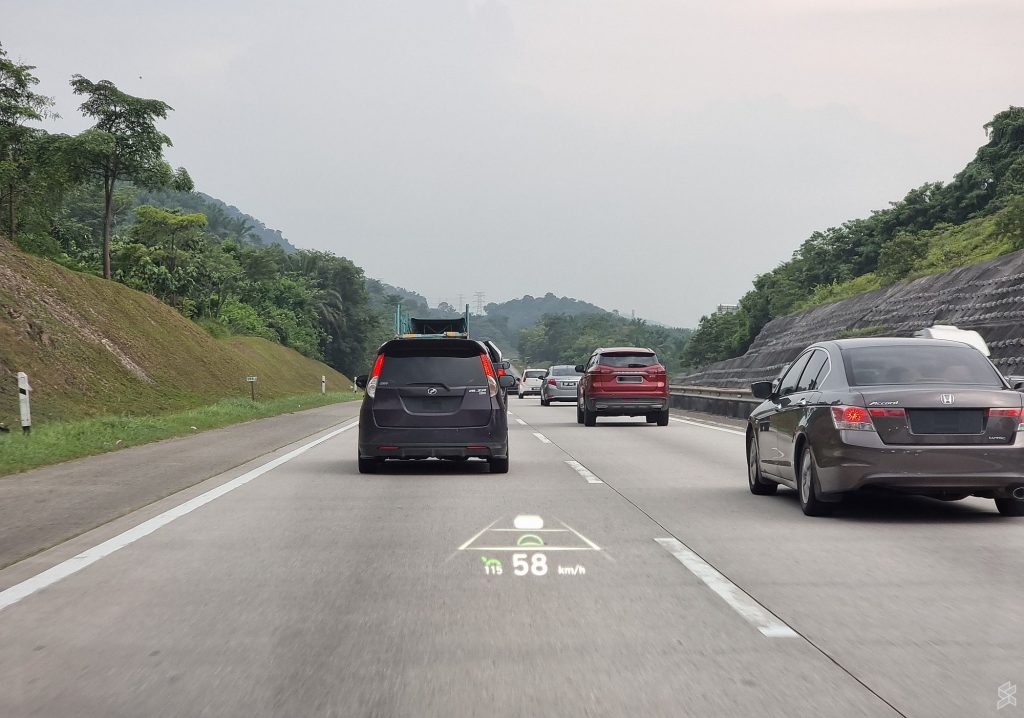
It started raining when we left Bukit Gantang R&R and there was some congestion ahead which reduced our average speed to 50-80km/h. After an hour of driving in stop-and-go traffic, our battery level dropped to 91% with 56km of distance travelled as we approached Ipoh. At the time, the Ioniq 6 was showing an efficiency of 13.1 kWh per 100km.
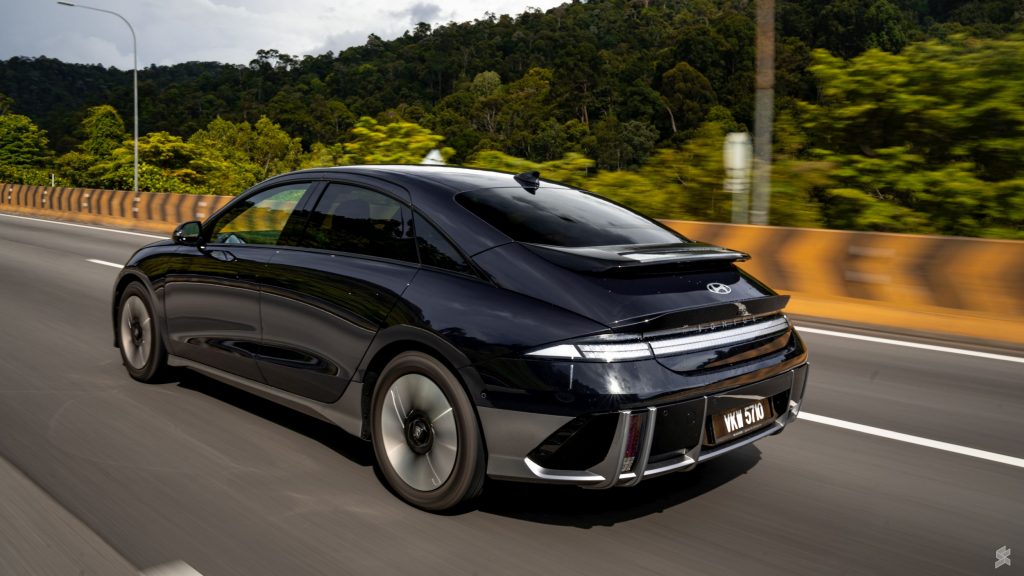
Continuing our journey, we passed by Ulu Bernam R&R at 75% battery remaining and 172km of distance travelled. Thanks to the congestion, we got an even better efficiency of just 11.8 kWh per 100km which was impressive. If we could get 172km with just 25% battery, the Ioniq 6 should be able to do 688km on a single charge if we maintained the same efficiency for the entire trip.
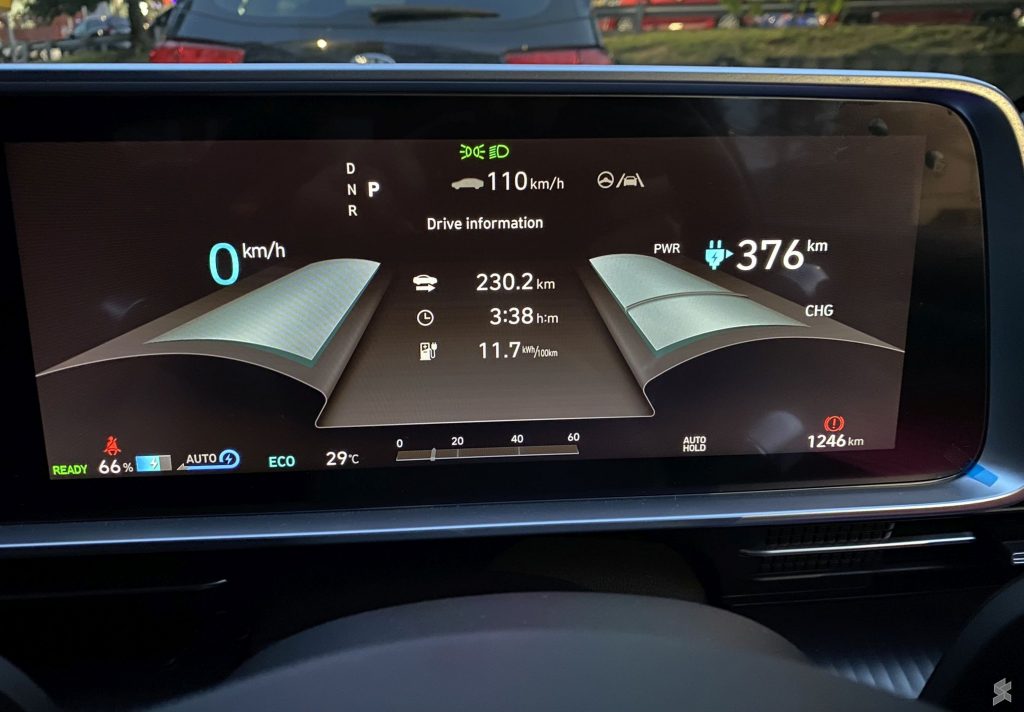
After 2 hours and 30 minutes and 230km of distance travelled, we made a dinner stop at Sungai Buloh R&R in Selangor. As shown above, we clocked an impressive efficiency of 11.7 kWh per 100km between Bukit Gantang to Sungai Bulo. We had 66% battery and 376km indicated range remaining. At this point, things are looking good as we are 350km away from our final destination.
We continued on after dinner and the Ioniq 6 battery hit the 50% mark as we passed by Senawang, Negeri Sembilan. With clearer roads and an average speed of 90-100km/h, our efficiency was still hovering at 11.9 kWh per 100km. We had 278km range remaining on the instrument cluster which is still more than enough to reach JB.
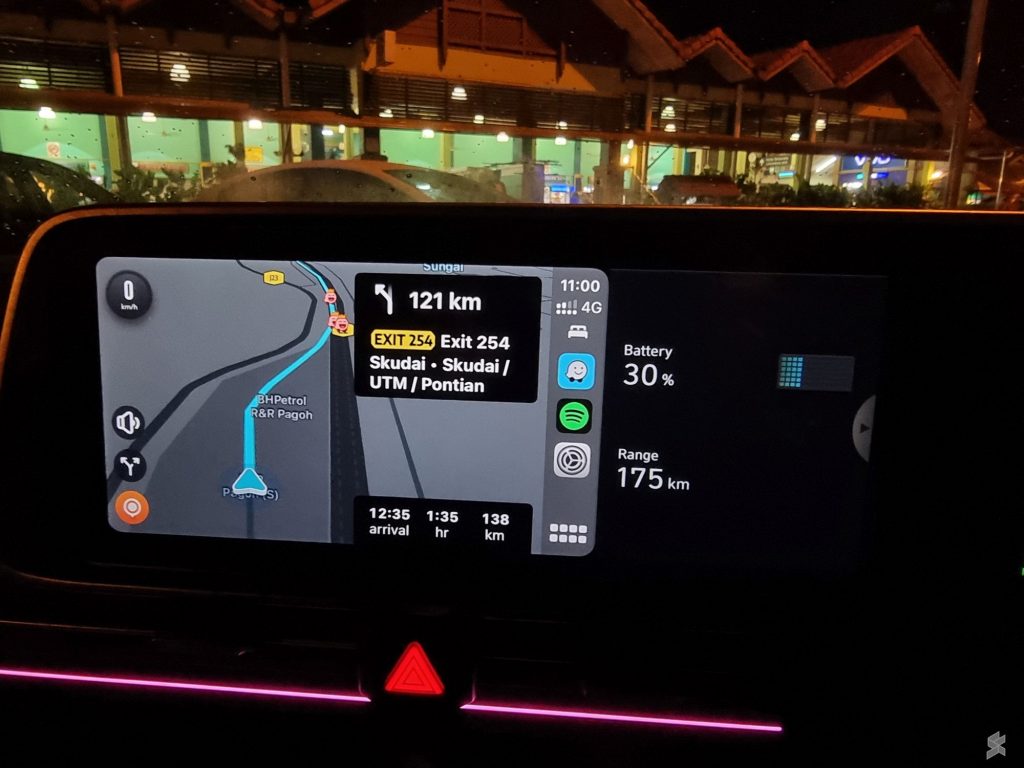
After crossing the Johor state border, we made a toilet break at Pagoh R&R. At this point, the Ioniq 6 had 30% battery and 175km of indicated range left. With clear roads and a consistent 110km/h speed, our efficiency took a slight hit and it was showing 12.1 kWh per 100km. With 138km distance to go, we were not worried since the range has an extra buffer of 37km.
Approaching the finishing line with no anxiety
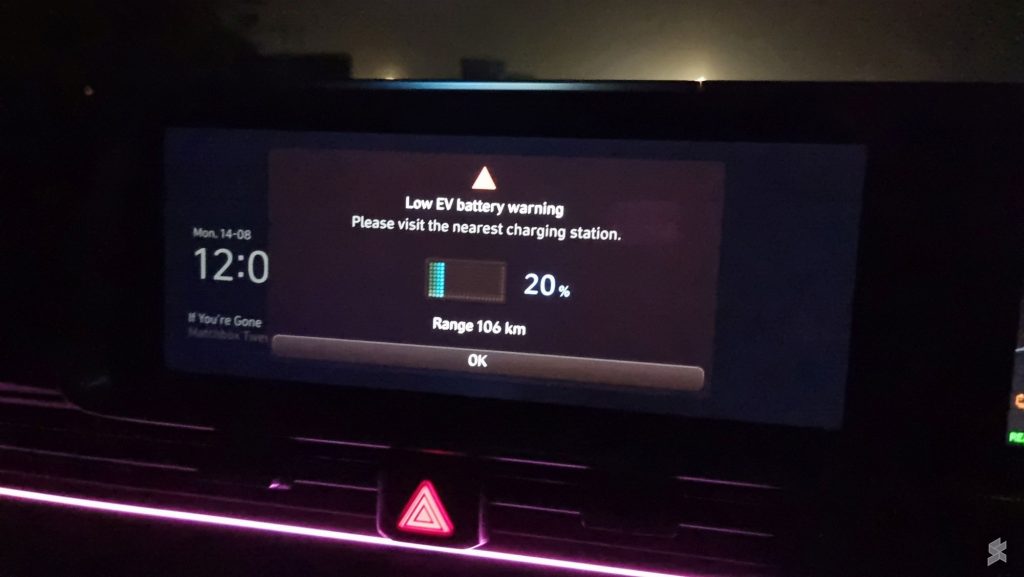
As we are getting closer to the finishing line, we got our first battery warning alert at 20% and we have 106km of driving range left. At the time, we passed Ayer Hitam and our efficiency dipped to 12.9 kWh per 100km after some spirited driving and overtaking. To improve our efficiency, we reduced our adaptive cruise control to 100km/h for the final stretch of the journey. Everything else remained unchanged and we still have our air-conditioner running at 23 degrees.
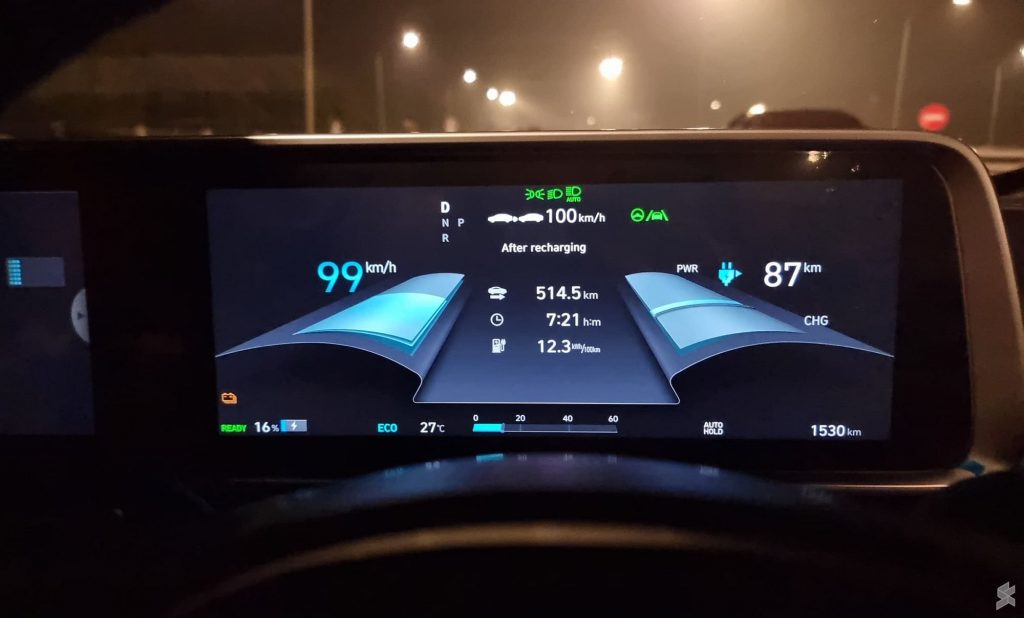
At the 16% battery mark, the displayed efficiency improved and it was showing 12.3 kWh per 100km. With 87km to go, we are still on track to reach the destination with extra range to spare.
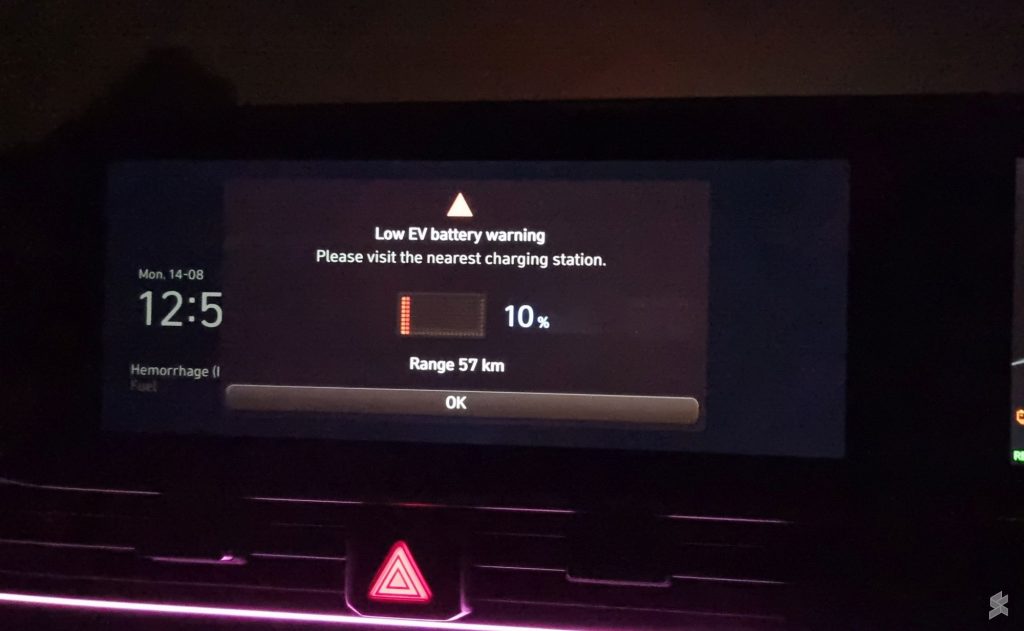
The second battery warning kicks in at 10% and with 57km range remaining. Despite the warning, we have no worries as we have passed Kulai and there’s more than enough range to complete the trip. At the time, our efficiency remained at 12.3 kWh per 100km. The electric motor is still pushing the same performance under Eco mode at 100km/h and there’s no power throttling until the very end.
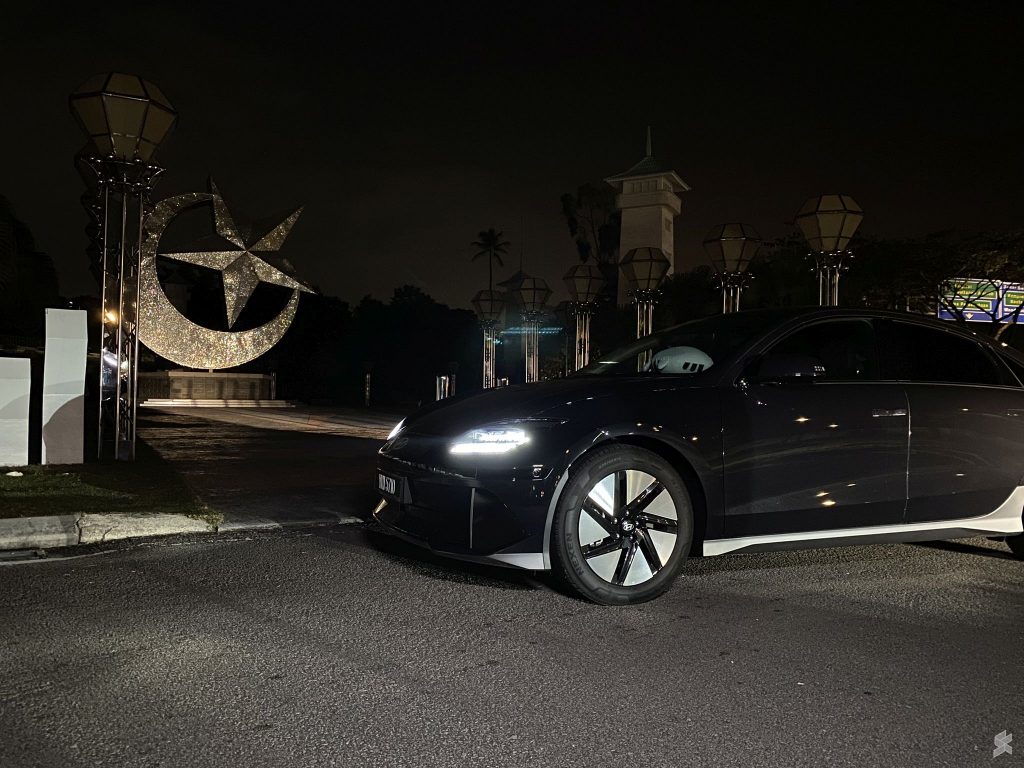
Right before 1:30 am, we finally reached our final stop at Istana Bukit Serene in Johor Bahru. The Ioniq 6 had 5% battery and 32km of range left. According to the instrument cluster, we did 575.1km since our 100% charge at Bukit Gantang in Perak or 600km if you count from our starting point in Taiping. Our overall efficiency was 12.2kWh per 100km since the last recharge. After shooting our video at the final stop, we did a quick charge for the Ioniq 6 at Zenith Lifestyle Mall in Johor Bahru which was just 8km away.
What we have learned from this 600km trip
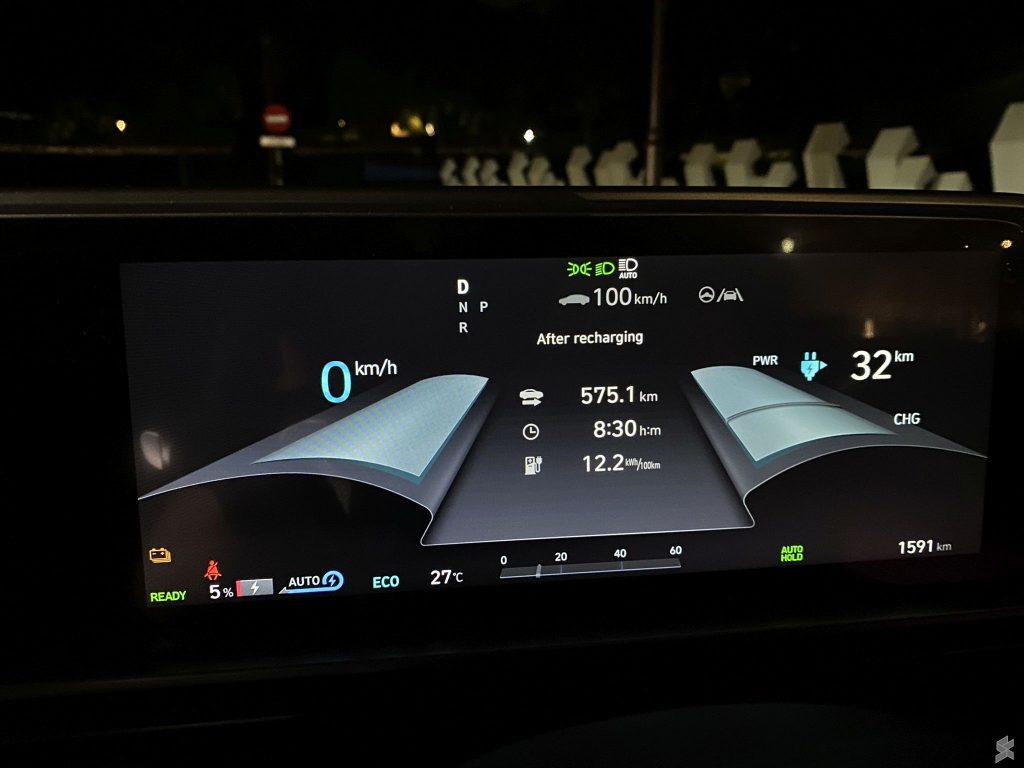
Without a doubt, the Hyundai Ioniq 6 RWD has proven itself to be an epic long-distance cruiser and it is possible to get over 600km of range on a single charge. You don’t need any hypermiling techniques and the range is achievable as long as you drive within the national speed limit. As demonstrated in the early stretch of the journey, some congestion and stop-and-go traffic can help to improve your overall range. EVs typically sip very little power during slow traffic and they can recoup energy from regenerative braking.
Another thing we learned is that the estimated range is overly conservative and the Ioniq 6 could deliver more range than indicated. Instead of getting worried about the estimated range, we looked at the battery percentage and efficiency (kWh per 100km) to determine if our range was on track. If we drove a little bit more sensibly and reduced our max speed to 100km/h from the start, we could have probably reached JB without getting the 10% battery warning.
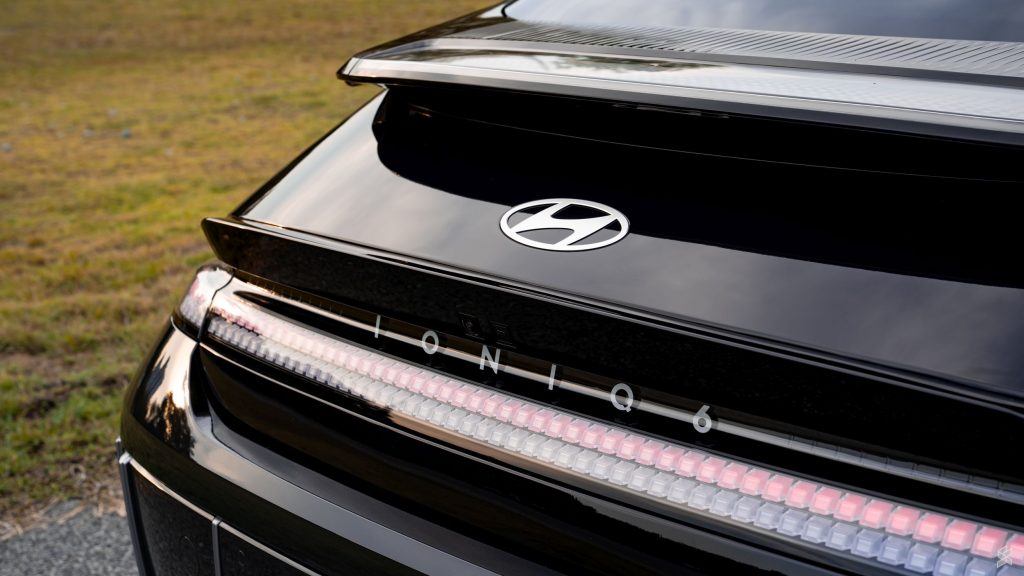
While the Ioniq 6 has an extensive range, we had to make two stops for dinner and a toilet break during this 600km trip. Realistically, there’s no need to start the journey at 100% and we could have easily topped up the car’s battery with a quick 15-30 minute charge at designated R&Rs during breaks. From our experience, charging from 80-100% took much longer (almost 30 minutes) than charging from 10-80% (20-30 minutes) as the charging rate is significantly slower at a higher State of Charge. If we planned our charging with R&R stops, we could have reached our destination earlier.
The Ioniq 6 uses an 800V battery architecture similar to the Hyundai Ioniq 5 and Kia EV6, and we could get 10-80% charge in just 20 minutes even with a 180kW DC Charger. The ability to top up from 10-80% within 20 minutes is one advantage that you won’t find on other long-range EVs like the Tesla Model 3 AWD Long Range or the Mercedes-Benz EQE350+ which uses a 400V architecture.
If you want to know what the Hyundai Ioniq 6 RWD is like to drive for long distances, stay tuned for our subsequent post and full review. Here’s a recap of how much we spent to charge the Ioniq 6 RWD throughout our total 1,236km journey from Kuala Lumpur to Ipoh to Taiping to Johor Bahru and back to Kuala Lumpur.
Related reading
- Over 1,200km with the Hyundai Ioniq 6: Here’s how much we spent on EV charging
- Hyundai Ioniq 6 Malaysia: Cheapest EV with over 600km range on a single charge
- Tesla Model 3 Highland is now the cheapest EV in Malaysia with over 600km range
- Hyundai Ioniq 6 for Malaysia has a longer range than the Tesla Model Y
- Hyundai Ioniq 5 Max Malaysia Review: The best EV under RM300K

